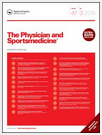 Becker’s disease is an inherited muscular dystrophy caused by mutations in the gene coding for the dystrophin protein that leads to quantitative and/or qualitative protein dysfunction and consequent muscle degeneration. Studies in animal models demonstrate that, while eccentric or high-intensity training are deleterious for dystrophic muscles, low-intensity aerobic training may slowdown the disease process and progression.
Becker’s disease is an inherited muscular dystrophy caused by mutations in the gene coding for the dystrophin protein that leads to quantitative and/or qualitative protein dysfunction and consequent muscle degeneration. Studies in animal models demonstrate that, while eccentric or high-intensity training are deleterious for dystrophic muscles, low-intensity aerobic training may slowdown the disease process and progression.
Based on these preclinical data, the available studies in patients with Becker’s muscular dystrophy undergoing workout on a cycle ergometer or on a treadmill, at a heart rate ≤65% of their maximal oxygen uptake, showed that aerobic exercise counteracts physical deterioration and loss of functional abilities. These findings suggest an improvement of physical performance through an increase of muscle strength, fatigue resistance, and dexterity capacities, without substantial evidence of acceleration of muscular damage progression. Therefore, individually tailored mild-to-moderate intensity aerobic exercise should be considered as part of the management of these patients. However, further research is necessary to define specific and standardized guidelines for the prescription of type, intensity, frequency, and duration of motor activities.
In this review, the authors provided a summary of the impact of physical activity both in animal models and in patients with Becker’s muscular dystrophy, with the intent to identify trends and gaps in knowledge. The potential therapeutic implications and future research directions have been also highlighted.
